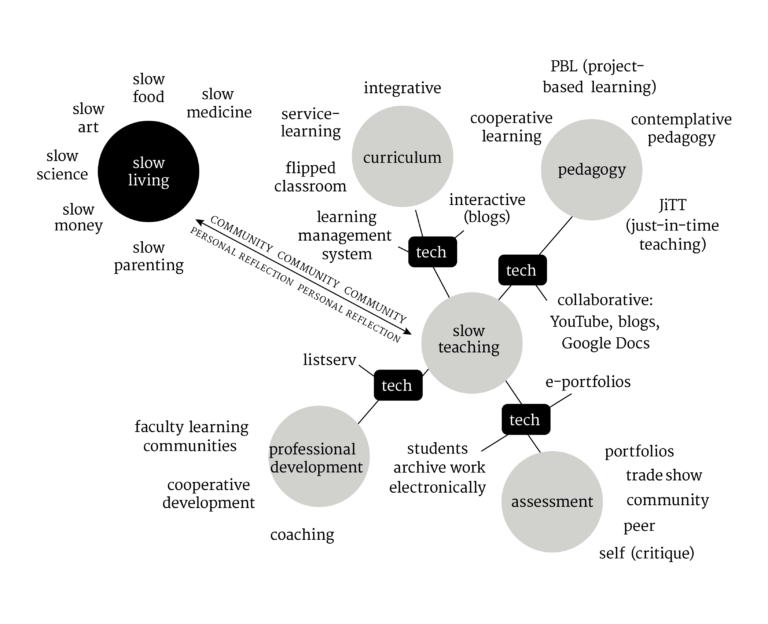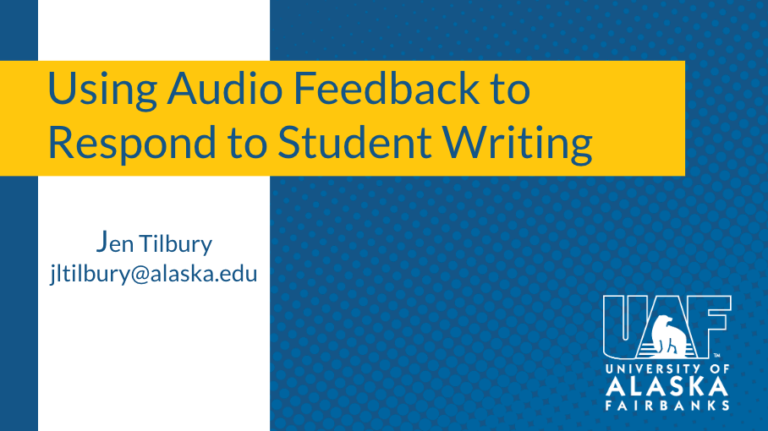
Facilitate active learning online
We learn better when we are involved in constructing our own knowledge. Some of us know this from experience — it’s why we do research, why we collaborate, why we ask our kids questions when we read to them. But this is also a finding backed by decades of research on “active learning,” which encompasses learning activities that require students to engage in higher-order thinking to construct knowledge and understanding. According to a 2014 study of STEM courses, students in traditional lecture courses were 1.5 times more likely to fail than students in courses that incorporated active learning (Freeman et al., 2014). Students who participate in active learning also perform better on assessments and self-report more learning and more engagement with their learning (Chen et al., 2018). These students are not just listening to a lecture (or reading a textbook or watching a video) and taking notes. Instead, they are working in groups on inquiry-based projects, connecting their learning to real-world contexts, and doing critical self-reflection. Some of these students are doing all these things in the context of an online class, where facilitating this level of interactivity might seem daunting because, in most online courses, we don’t share a time and place for interaction. Meanwhile, despite all the evidence in support of these techniques, it can feel hard to devote precious course hours to them — especially if you’re concerned about fitting all the course content into a short 12 or 15 weeks. How are faculty at UAF addressing these barriers? What can you do to ensure not just that you get through all your course content, but that students learn it?
Active learning approaches ask students to do — to create, connect, engage and reflect. In his BIOL 111 Human Anatomy and Physiology course, instructor Don Larson asks students to ‘create a visual art project based on one of the objectives covered in lecture.’ These STEAM projects account for 10% of students’ final grades in the course, and Don shares a rubric to help clarify how he’ll assess them. He pushes students to grapple with the material and make it their own by advising that they represent their chosen objectives “in an abstract or non-literal way; that means your work must be an interpretation of an objective.” He also pushes students to do independent research by specifying that projects “must go into greater depth than both the textbook and lectures.“
In the online offering of the course this fall, students will devote two weeks of lab time to researching and creating their STEAM projects, and then will review and present on a peer’s project — making each student an expert on two projects. By asking students to interpret, research, and create, Larson is facilitating their active participation in constructing their own learning. And it works, he says. Students understand the concepts much more thoroughly after doing these projects. On top of that, the projects allow Larson to learn both from and about his students, as the projects highlight student areas of interest and bring new perspectives on course content. Finally, in this 100-level class, these projects get students thinking like researchers; that is, students are thinking creatively, problem-solving, and practicing communicating results.
In a 2018 study of effective learning design for online STEM courses, researchers found that “students welcomed projects that apply to the real world and real-life problems/examples/ scenarios […] They reported better understanding when the instructor related the course content to real-life situations” (Chen et al., 2018). In her online BIOL 103 Biology and Society course, instructor Anja Kade includes a weekly “Hot Topics” assignment that asks students to “explore how a biological topic relates to a current hot topic facing society.” Students find credible current news articles related to the week’s course content and share them in a Google doc, where they can also explore what their peers have posted. Kade says that with this assignment, “I hope to engage especially non-major students by applying classroom concepts to their everyday life and discussing topics that are critical to our society.” This weekly practice of venturing beyond Blackboard prompts students to help build and interpret course content while also connecting their learning in the course to what’s happening in the world around them. This kind of connection requires higher-order thinking which is a cornerstone of active learning.
For more ideas about how to facilitate active learning in your class, check out our Pedagogy Resources on “Presentation and Participation” and “Facilitating Critical Thinking.” For more on STEAM learning, check out recent Teaching Tips on “Integrating disciplines to help students succeed” and “Integrating arts, humanities into the science classroom.” Interested in learning more about what your creative colleagues are doing in their courses? Consider applying to one of our faculty development programs.
Reference
Chen, B., Bastedo, K., & Howard, W. (2018). Exploring design elements for online STEM courses: Active learning, engagement & assessment design. Online Learning, 22(2), 59- 75. doi:10.24059/olj.v22i2.1369.
Freeman, S., Eddy, S.L., McDonough, M., Smith, M.K., Okoroafor, N., Jordt, H., and Wenderoth, M.P. (2014). Active learning increases student performance in science, engineering, and mathematics. Proceedings of the National Academy of Sciences USA 111, 8410-8415.

Kendell Newman Sadiik
Associate Director of Transformative Teaching
Instructional Designer
LION Liaison



